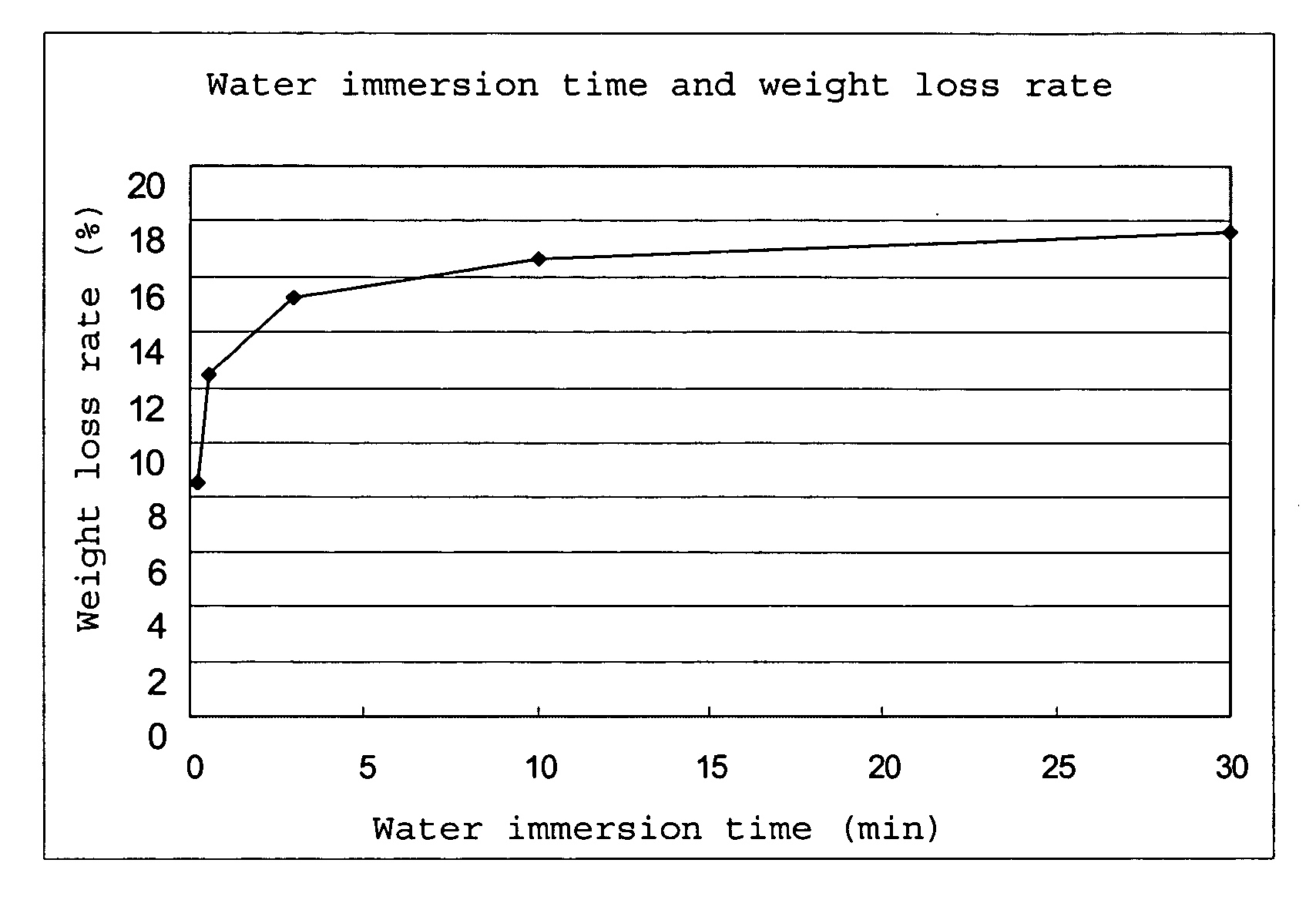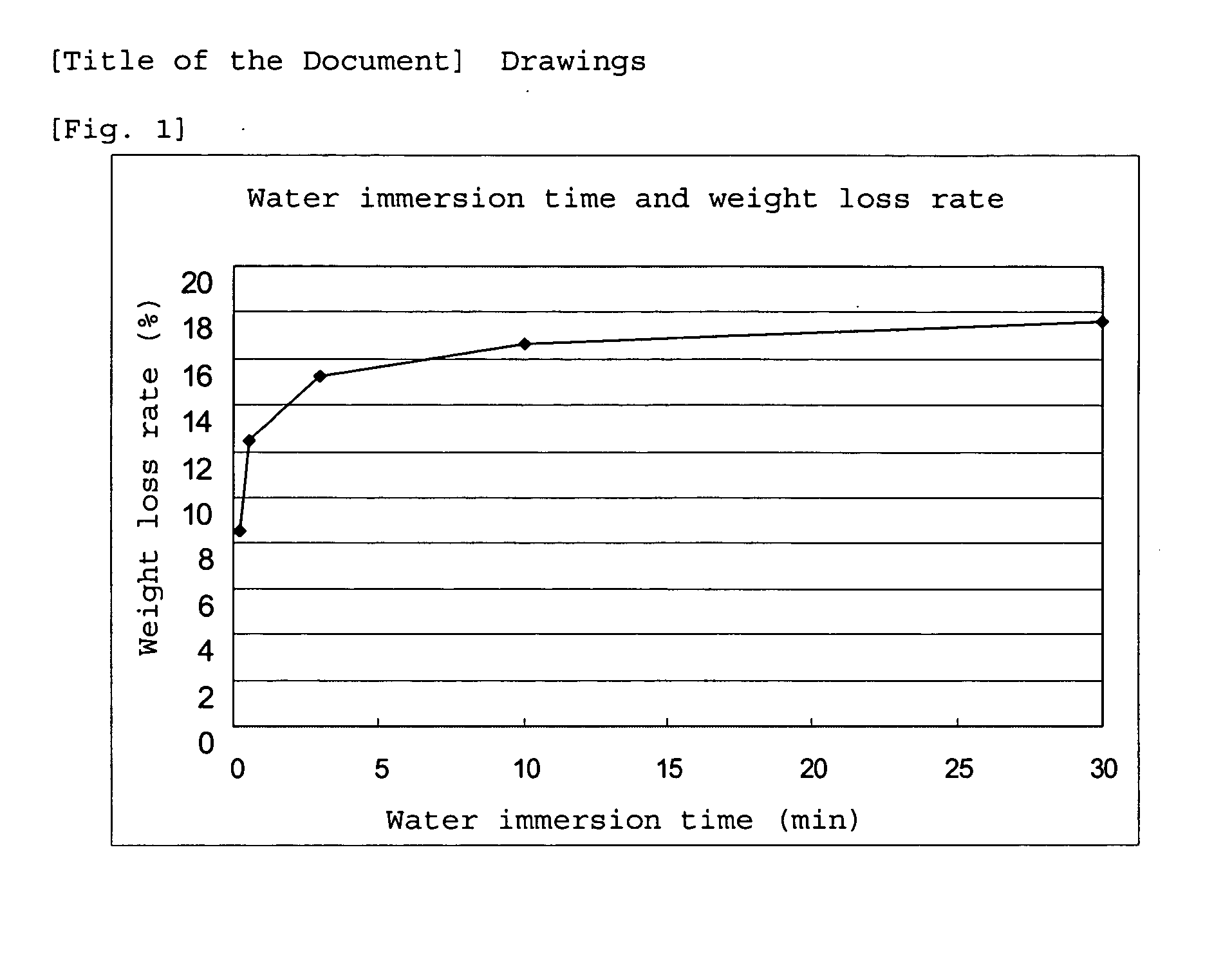Fabric for Clothing and a Production Method Thereof
a technology for clothing and fibers, applied in the field of clothing fibers, can solve the problems of inability to produce fibers with a sufficiently small fineness for common clothing, low strength, stiffness, etc., and achieve the effects of high tg, good heat resistance, and high strength
- Summary
- Abstract
- Description
- Claims
- Application Information
AI Technical Summary
Benefits of technology
Problems solved by technology
Method used
Image
Examples
example 1
[0078] First, 240 parts by weight of acetic acid and 67 parts by weight of propionic acid were added to 100 parts by weight of cellulose (supplied by Nippon Paper Industries Co., Ltd., dissolving pulp, α-cellulose 92 wt %), and mixed at 50° C. for 30 minutes. Cooling the mixture produced to room temperature, 172 parts by weight of acetic anhydride and 168 parts by weight of propionic anhydride cooled in an ice bath were added as esterifying agents, and 4 parts by weight of sulfuric acid was added as esterifying catalyst, followed by stirring for 150 minutes to ensure esterification. If the temperature reaches 40° C. during the esterification reaction, the mixture was cooled in a water bath. After the reaction has been almost completed, a mixture of 100 parts by weight of acetic acid and 33 parts by weight of water, used as a reaction terminator, is added little by little over a period of 20 minutes to hydrolyze the excess anhydride. Then, 333 parts by weight of acetic acid and 100 p...
example 2
[0083] The same fiber (100T-24f) consisting of a cellulose mixed ester and a plasticizer as in example 1 was used as warp while a polyester fiber (50T-22f) was used as weft in an air jet loom to produce a five-fold satin fabric.
[0084] The satin fabric was rinsed with water at 60° C. for 5 minutes to remove the plasticizer, and scoured to remove oil and other stains. This rinsing and scouring worked to decrease the weight of the satin fabric by 15.1%. Oil had been added up to 0.2% or more, indicating that the content of the plasticizer decreased by 14.9% or more. The plasticizer remaining in the fiber was estimated to be less than 0.1%.
[0085] Moreover, after performing intermediate setting at 160° C., the fabric was dyed at PH 5 by a conventional method using a jet dyeing machine.
[0086] Cibacet Scarlet EL-F2G 0.5% owf (supplied by Ciba Specialty Chemicals K.K.)
After the dying, RC washing was carried out under the following conditions.
example 3
[0095] The same procedure as in example 1 was carried out to produce pellets except that 90 wt % of a cellulose acetate butyrate produced by using butyric acid instead of propionic acid was adopted as said cellulose mixed ester and that 10 wt % of polyoxyethylene distearate was used as plasticizer. A yarn was spun as in example 1 from the pellets produced. The yarn showed a good thinning behavior and left no residues on the nozzle. No fuming was seen, and breakage of the yarn did not take place during spinning. Thus, the composition showed very good yarn formation properties. The fiber produced had a strength of 1.2 cN / dtex and an elongation of 26%.
[0096] The fiber obtained was then used as warp to produce a plain weave gray fabric with a rapier loom. The fabric was rinsed with a jet dyeing machine at 60° C. for 10 minutes to remove the plasticizer, and washed in a scouring liquid containing a scouring agent and sodium carbonate at 70° C. for 10 minutes to remove paste and oil. The...
PUM
| Property | Measurement | Unit |
|---|---|---|
| Tg | aaaaa | aaaaa |
| diameter | aaaaa | aaaaa |
| diameter | aaaaa | aaaaa |
Abstract
Description
Claims
Application Information
 Login to View More
Login to View More - R&D
- Intellectual Property
- Life Sciences
- Materials
- Tech Scout
- Unparalleled Data Quality
- Higher Quality Content
- 60% Fewer Hallucinations
Browse by: Latest US Patents, China's latest patents, Technical Efficacy Thesaurus, Application Domain, Technology Topic, Popular Technical Reports.
© 2025 PatSnap. All rights reserved.Legal|Privacy policy|Modern Slavery Act Transparency Statement|Sitemap|About US| Contact US: help@patsnap.com



